The Palais Garnier is one of the most well-known landmarks in Paris – commissioned by Napoleon III in 1860, and constructed by Charles Garnier in 1874. The ornate, golden decor, jaw dropping grand staircase, and magnificent domed ceiling fresco certainly make the opera house a must-see on any trip to Paris.
Below are my tips and tricks for visiting the Paris Opera House.
Background on the Paris Opera House
Why is the Paris Opera House famous?
The Palais Garnier is the backdrop for Gaston LaRoux’s gothic novel, Phantom of the Opera – which, in turn, inspired Andrew Lloyd Webber’s musical of the same name. The popularity of the book, and especially the subsequent musical, have stapled the opera house as a landmark for bookworms and theater-goers alike.
While most of the events of the novel were fictional, many were inspired by true events at the Paris Opera House. A chandelier really did fall, ghosts were really thought to roam the halls, and a “lake” of water really does exist under the building. Who knows… maybe Erik really is lurking deep underneath the theater floors.
If you are a Phantom of the Opera fan, then visiting the Paris Opera House is a must. The Palais Garnier has even reserved out the Phantom’s opera box for visitors to look at, but not enter (of course!).
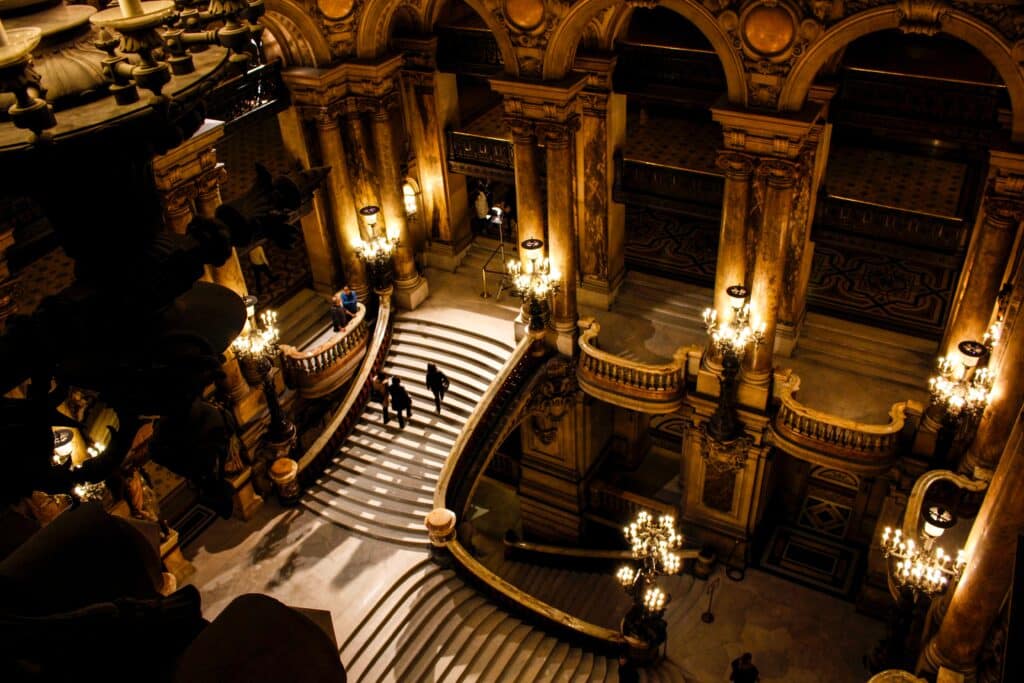
Who painted the ceiling of the Paris Opera House?
Marc Chagal was the artist behind the incredibly designed ceiling fresco. If you look closely, the images compiled in the design pay homage to some of the most notable dancers, singers, artists, and actors in a beautiful, watercolor-esque manner. The bold colors make the ceiling perhaps the most awe-inspiring aspect of the opera house.
Notably, the ceiling also holds the infamous chandelier. If you have seen the musical Phantom of the Opera, you will recognize its circular light bulbs and ornate gold decor. In 1896, the real chandelier actually did fall from the ceiling, and the counterweight holding it up killed a man on the floor below.
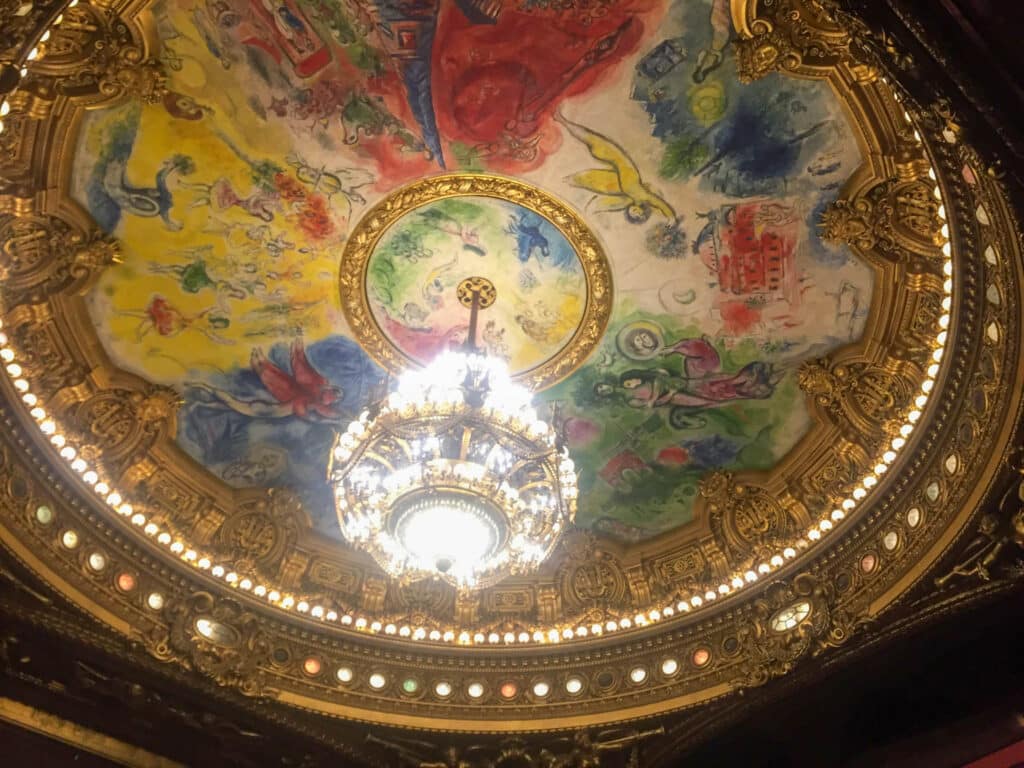
Is there water under the Paris Opera House?
Yes! There is an underground “lake” deep beneath the Paris Opera House. However, it is more of a reservoir than an actual lake. Surprisingly, the “lake” was actually part of Charles Garnier’s original blueprint for the building. The intrusion of groundwater disrupted construction on the foundation of the building.
Building the water well helped relieve some of the pressure on the foundation, and helped support the structure above ground. The water underneath the opera house was also on reserve in the event of a fire in the city – do to the building’s close proximity to the city center.
Unfortunately, no phantoms live across the lake (that we are aware of…).
Touring the Paris Opera House
How do you get to Palais Garnier?
The Palais Garnier is located in the 9th arrondissement in Paris. The opera house is directly next to the ‘Opéra’ metro stop, as well as several popular bus lines. Given that the opera house is a landmark, it is easy to reach from nearly anywhere in Paris.
- Travel by Metro – Take the 3, 7, or 8 line to Opéra
- Travel by Bus – Take the 20, 21, 22, 27, 32, 29, 45, 52, 66, 68, 95, buses to the Opéra stop.
- Travel by Uber/Lyft – Input your destination as ‘Paris Opera House’, ‘Palais Garnier’, or enter the address: Pl. de l’Opéra, 75009 Paris, France
- Travel by foot – If you are in the area already, you can walk or bike to the address above.
Can you tour the Paris Opera House?
Palais Garnier is open to the public for tours between the hours of 10am and 5pm daily – unless there is an event taking place during the day or afternoon. The last tours are admitted at 4:15pm, so be sure to get there early! I recommend arriving early in the day to avoid crowds and lines.
The Palais Garnier is also still very much an operating theater. In addition to Opera, the theater is home to the ballet and symphony. If you are looking for a night out, this is a fantastic option.
Check out this season’s show offerings and purchase tickets on the Palais Garnier’s official website.
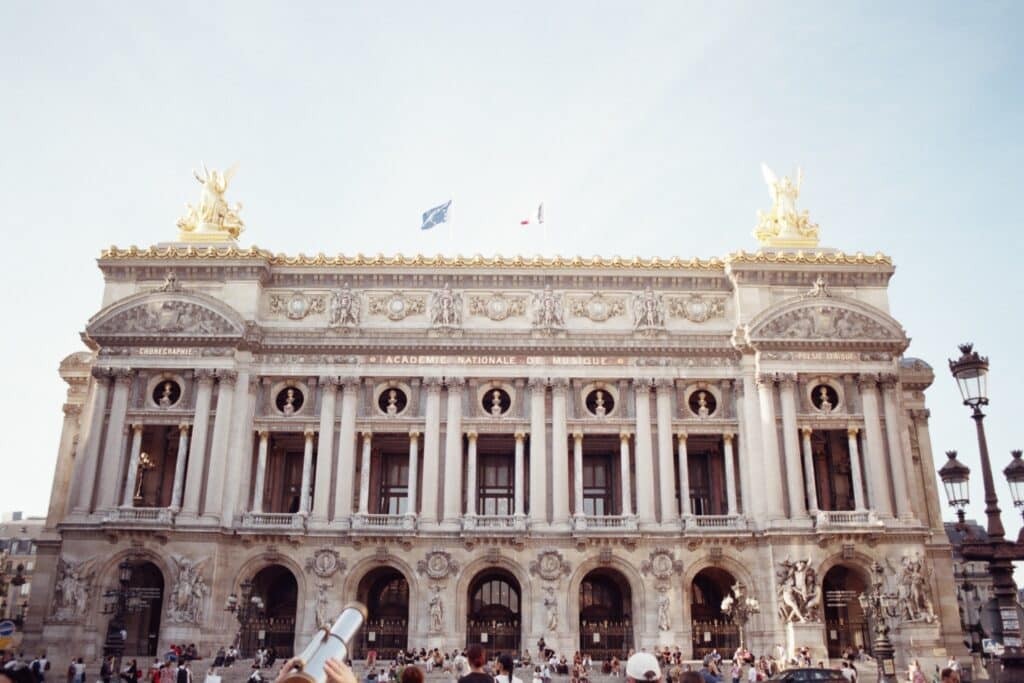
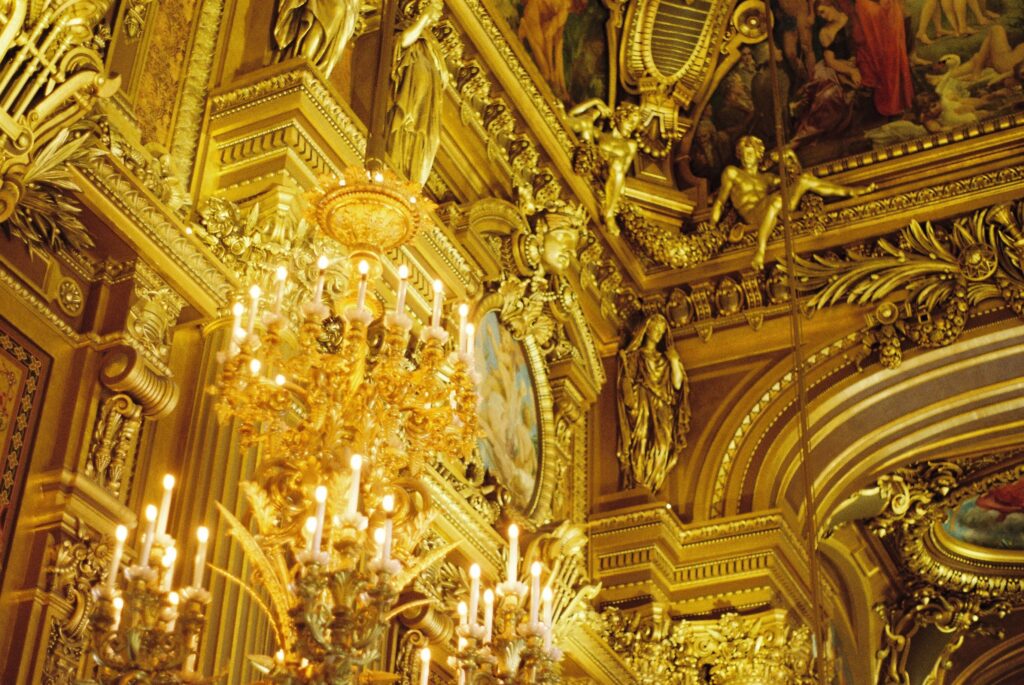
Is there a dress code?
There is no official dress code for visiting Palais Garnier. If you are on a typical tour during the day, you should be fine wearing modestly appropriate attire.
That said, the opera house hosts many events and galas that do have strict dress codes. If you are attending an event at the Paris Opera House, be sure to check your ticket for attire recommendations.
How much does it cost to visit the Paris Opera House?
Tickets to the Palais Garnier cost 14 Euros for a self-guided tour, and slightly more for a guided tour. Backstage tours are offered for groups of up to 30 participants, with the option of adding on a special tour of the costume workshops. However, these backstage tours are certainly pricey – the most expensive option being $2,500 for the group.
Self-guided tickets can be purchased at the entrance of Palais Garnier, or online in advance. For group or guided tours, I recommend booking in advance online.
Purchase tickets on the Palais Garnier’s official website.
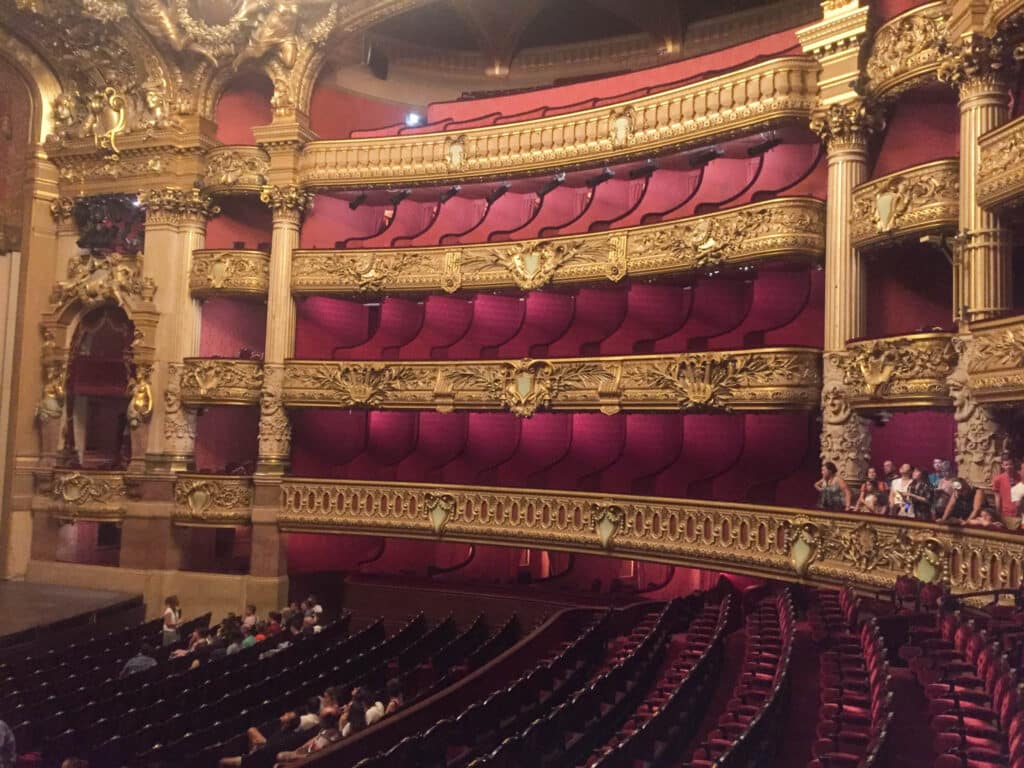
That’s all, folks!
Hopefully this guide gives you kickstart planning a trip to the Palais Garnier. It is an architectural marvel and an absolute must-see for any first timers in Paris.
In addition to gawking at the opera house during the day, it is not uncommon for tango dance to break out on the opera house steps at night. People from all over flock to dance together under the stars. It was one of the best hidden gems I discovered on my trip to Paris.
Have you visited Palais Garnier? Drop a comment about your experience below!
Check out my guide to Paris for more things to add to your bucket list!

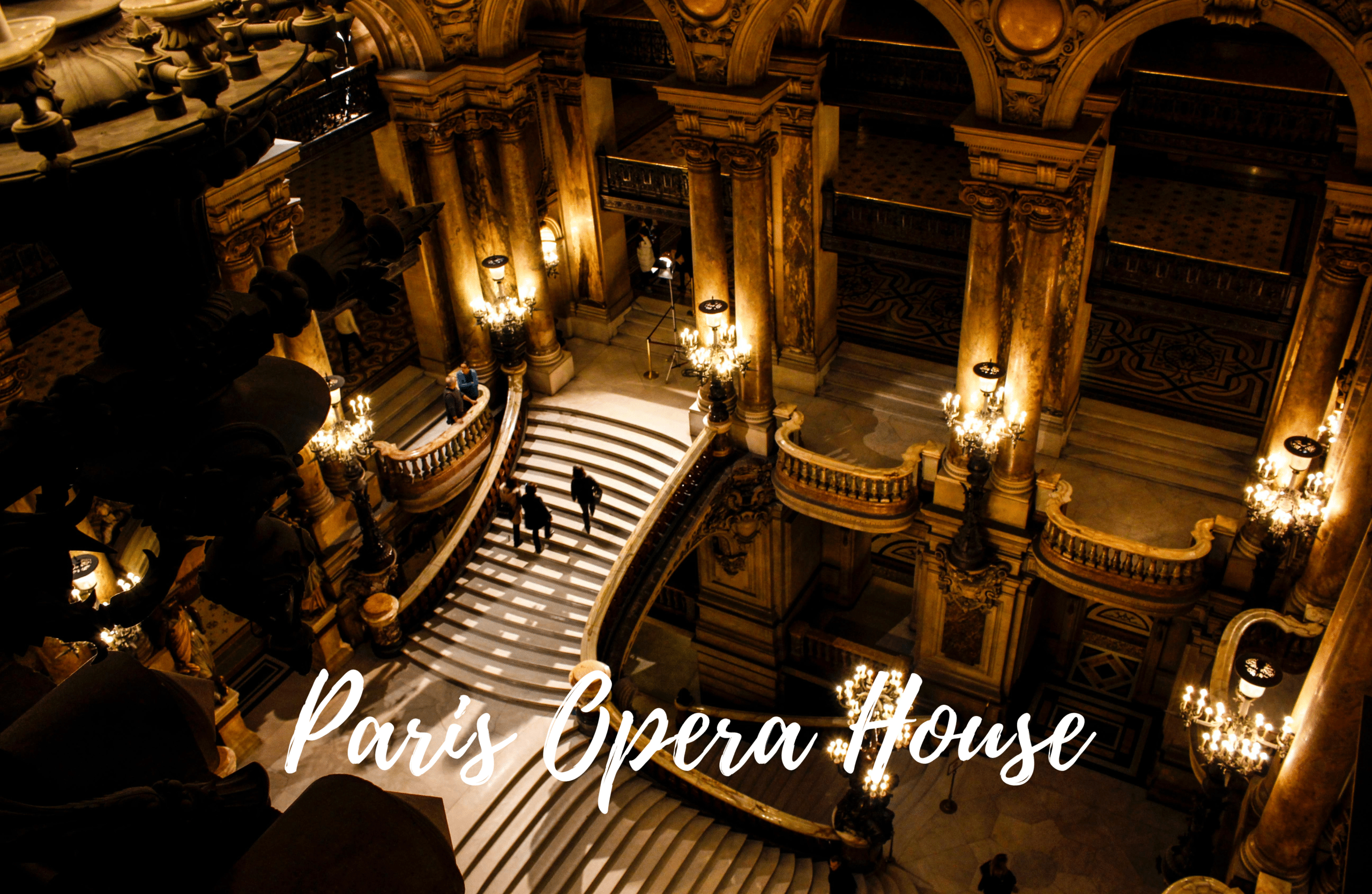






0